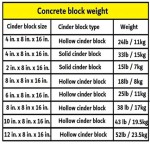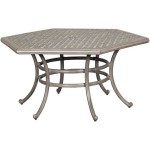Essential Aspects of How to Install a Sliding Patio Door Lock
A secure and reliable sliding patio door lock is crucial for the safety and peace of mind of any homeowner. Here are some essential aspects to consider when installing a new lock on your sliding patio door:
1. Lock Type:
There are various types of sliding patio door locks available, including keyed locks, deadbolts, and sliding bolts. Each type offers different levels of security and convenience. Choose a lock that suits your specific needs and preferences.
2. Installation Method:
Sliding patio door locks can be installed either on the surface of the door or mortised into the frame. Surface-mounted locks are easier to install, while mortised locks provide a more secure and discreet appearance.
3. Compatibility:
Ensure that the lock you select is compatible with your sliding patio door. Consider factors such as the door thickness, panel frame, and the existing handle hardware.
4. Durability and Security:
The lock should be made of durable materials and be resistant to tampering. Look for locks with high-security ratings and anti-pry mechanisms for enhanced protection.
5. Ease of Use:
Choose a lock that is easy to operate and does not require excessive force or awkward hand positions. Consider locks with ergonomic handles and smooth-locking mechanisms for effortless use.
6. Multiple Locking Points:
For enhanced security, consider installing a multi-point lock system. These systems engage multiple locking points across the door width, providing a more secure barrier against forced entry.
7. Hidden Locks:
Some sliding patio door locks can be hidden from the outside for improved aesthetics and to deter potential intruders. These locks are often discreetly placed within the door handle or frame.
8. Keyed Locks vs. Keyless Locks:
Keyed locks require a traditional key to operate, while keyless locks can be opened using a code, remote control, or fingerprint scanner. Keyless locks offer convenience but may be more vulnerable to hacking if not properly secured.
9. Tamper-Resistant Screws:
Use tamper-resistant screws to secure the lock to the door. These screws have special heads that require a specific tool to remove, preventing unauthorized tampering.
10. Maintenance and Lubrication:
Regular maintenance and lubrication are essential for the proper functioning of your sliding patio door lock. Inspect the lock periodically for any wear or damage and lubricate the moving parts as needed.
By following these essential aspects and choosing a high-quality lock, you can ensure a secure and reliable sliding patio door lock that protects your home from unauthorized entry.
How To Install A Sliding Patio Door Bolt Lock

How To Lock A Sliding Glass Door From The Outside

How To Replace The Dual Point Lock In A Builders Wood Sliding Patio Door

How To Replace Sliding Patio Door Lock Remove And Install

How To Install A Lock On Your Sliding Door
Glass Door Latch Replacement Ifixit Repair Guide

How To Install A Sliding Patio Door Bolt Lock

How To Replace The Dual Point Lock In A Builders Wood Sliding Patio Door

How To Replace The Single Mortise Lock On A Builders Vinyl Patio Door

3 Patio Door Lock Replacement Tips Experts Think You Should Know








